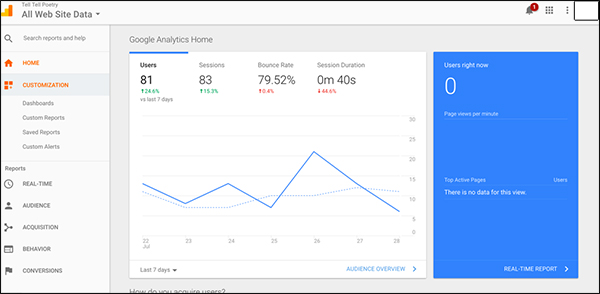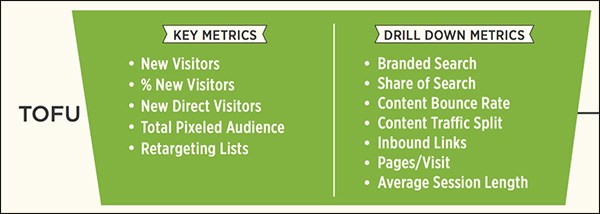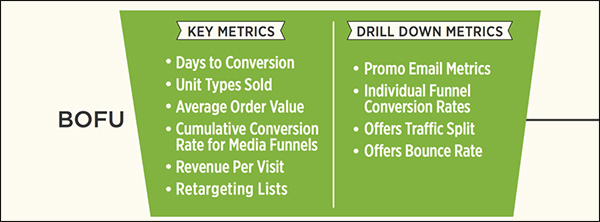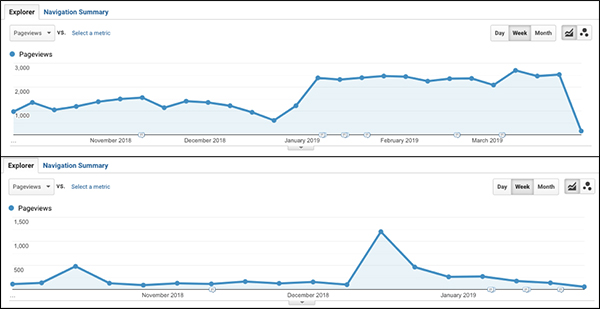When I was a kid, I loved paint-by-the-number kits. They made it easy to create impressive “artwork,” even as a budding artist with no training.
As a marketer, I still rely on numbers to guide my efforts—not to decorate my walls, but to drive traffic, sell products, and make smarter business decisions in general.
You could call it “marketing by the numbers.” In reality, it’s website analytics. And whether you consider yourself a numbers person or not, you need to get comfortable with it.
To help, I’m going to give you 3 simple principles for quick success—the analytics basics you need to know—so you can find your best numbers and start using website analytics to grow your business.
Step 1: Know Your Goals
It’s easy to get overwhelmed by analytics. Open any dashboard, and you’ll see lots of charts, graphs, and numbers.

The only numbers you need to pay attention to, though, are the ones that matter to you. You see, static numbers are meaningless. So until you decide they’re important, they’re not.
That’s why goals are so important. Before looking at any analytics dashboard, you need to know what information you’re looking for—the question you’re trying to answer.

Google Analytics is the standard for tracking your website metrics
Be aware, you should have different goals for the different stages of the funnel. Which means you’ll be asking different questions.
At the top of the funnel (TOFU), you want traffic from new visitors. The question you ask at the top of the funnel is whether the decisions you’re making are generating enough traffic.
To answer that question, you’ll look at these metrics:

At the middle of the funnel (MOFU), your goal is converting new visitors into leads. Here, you’ll ask whether people are subscribing, filling out a form, or sharing your page in social media—actions that reflect a growing interest in your brand and/or products.
To answer these questions, you’ll look at these metrics:

At the bottom of the funnel (BOFU), your goal is conversion—turning traffic into sales. So when you look at your analytics, you’ll ask yourself how well a page is converting prospects into sales.
To answer that question, you’ll look at these metrics:

Step 2: Know What’s Working
Once you’ve identified the numbers that are important to you, you’ll want to watch them carefully to see whether they’re trending up or down… whether there are spikes that indicate something worked extremely well… or downward spikes that indicate something hurt your results.
Your goal, of course, is to identify what’s working and what’s not. So when you see a spike in your website analytics numbers, you want to look around for the marketing activity or industry event that might have impacted your numbers.
For instance, a big spike in direct blog traffic could happen after you publish a new YouTube video or a guest post goes live on a reputable blog.

Examples of pageview spikes after popular or new content is published
Step 3: Use the Numbers to Drive Your Strategy and Website
In an ideal world, data will support every business decision you make—especially your marketing. That’s why you need to be tracking your analytics, watching the trends, and identifying the marketing activities that give you the most traction.
(NOTE: Need a helping hand with your digital marketing efforts? Or maybe you just want proven, actionable marketing tools, tactics, and templates to implement in your business? Check out the latest deal from DigitalMarketer, and you will be on your way to helping your business grow.)
Bottom line, you want to do more of the activities that help you meet your goals—and do less of the activities that don’t give you a good return on the time you’ve put into them.
To do that, you need to understand what metrics can tell you on a strategic level. For example…
What are people searching for? You need to know what searches are bringing the most traffic to your site. And you need to verify that those keywords are closely related to your core products.
If they aren’t, you need to do a better job of branding. At the very least, you need to update your website copy and create high-value content that tells people what your brand is about.
Sears is a good example of a brand that didn’t do this.
They were the early 1900s Amazon, the innovator of mail-order catalog marketing. In fact, until 1989, when Walmart passed them up, they had the largest domestic revenue of any retailer in the US.

They’re still known as a mail-order giant—so why didn’t they jump on ecommerce? Strategically, they could have approached it as catalog marketing for a new generation.
Sears should have been watching their metrics (and their competitors’) and jumped on this trend when it was just getting started.
What topics get the most traffic and attention? If you’re doubling down on one topic while your best traffic comes from another topic, you’ll struggle to grow your business.
Watch for the blog topics and product pages that get the most attention. Then create a strategy to build on that activity.
Let’s say you run a site on productivity. You’ve been promoting your Daily Planner because it’s the most obvious productivity tool. But analytics tells you a different story: It’s your article on goal setting that gets the most traffic and shares.
Clearly, setting goals is a pain point for your audience. Explore ideas for creating a product, like a goal setting planner, that helps your followers achieve their goals.

Analytics can uncover new or updated products your customers want.
Where does that traffic come from? You need to know where your traffic is coming from, so you can turn up the volume whenever you need to.
Let’s say you have 5 ads running for 1 product, each targeting a different customer segment. If one of those ads performs significantly better than the others, you could create more offers for that audience.
Or let’s say you’ve been writing guest posts for 5 popular blogs in your space. If most of your guest blogging traffic comes from just one of those sites, you might consider dropping the other four and doubling down on the one that’s working.
How do visitors behave once they’re on your site? You need to know which pages have high bounce rates… which pages send the most traffic to your sales pages… and which pages get the most engagement.

This helps you understand how to optimize your website and your funnels. It also tells you the type of content people like—so you can create more content that gets high engagement levels.
Bottom Line
Analytics isn’t really about the numbers. It’s about figuring out what’s working and what’s not.
The key is to always be analyzing and testing, then use the numbers to help you make smarter decisions.
That’s the bare-bones basics of website analytics. Or, as I like to call it, marketing by the numbers.
(NOTE: Need a helping hand with your digital marketing efforts? Or maybe you just want proven, actionable marketing tools, tactics, and templates to implement in your business? Check out the latest deal from DigitalMarketer, and you will be on your way to helping your business grow.)
The post Marketing by the Numbers: How to Get Started with Website Analytics appeared first on DigitalMarketer.
from Marketing by the Numbers: How to Get Started with Website Analytics

No comments:
Post a Comment